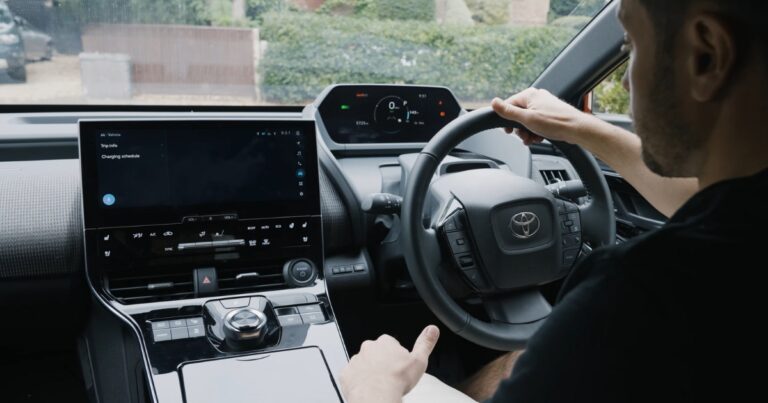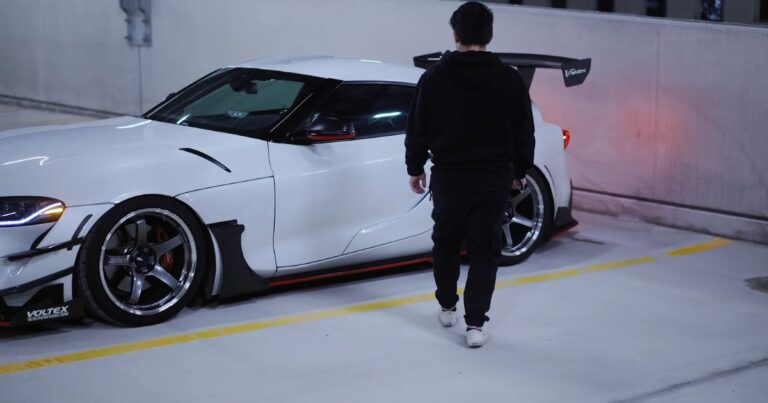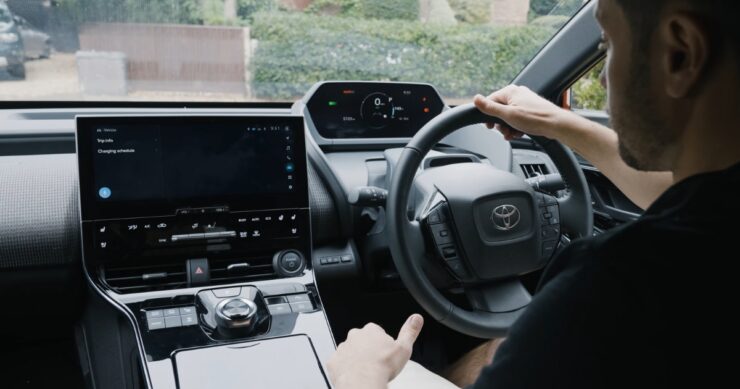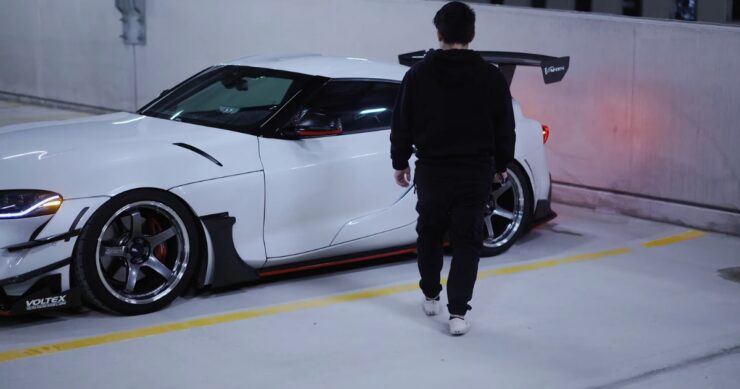This article discusses relevant Toyota info across selected models. We offer researched articles on the site for you, and the main aim is to give you an overview of how these models have evolved to become one of the biggest names in the automotive industry.
History of Toyota Tacoma
The Toyota Tacoma is a pickup truck (mid-sized) of Japanese origin. It was introduced into the market in 1995 as a compact-sized pickup truck. However, it has undergone various modifications and upgrades over the years, and it is now built/designed mainly as a mid-sized truck.
Over the years, Tacoma has been able to build a name for itself. Since it was first introduced to the market, it has gone through three (3) generations, and the third generation was introduced in 2015 and has remained in production to date.
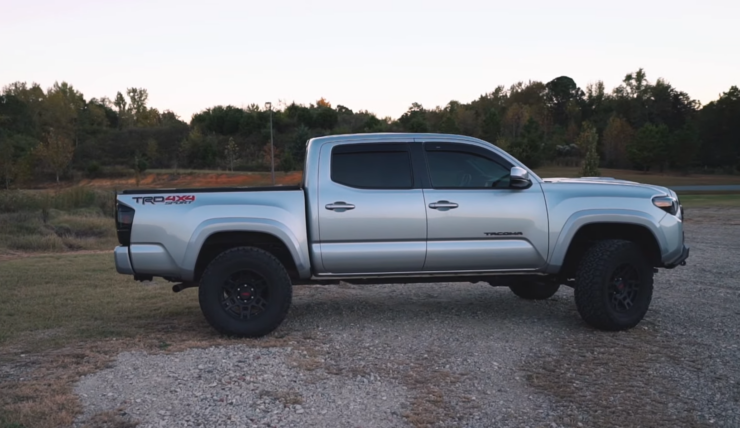
Comparative Features for Toyota Tacoma
- Power: Over the years, the Toyota Tacoma has offered several engine types/designs. This ensures adequate power needed to achieve reliable performance on the road is made available.
- Performance: Toyota Tacoma offers a good amount of power, good payload, and off-road & towing capabilities. It also supports a smooth ride experience.
- Drive: The Toyota Tacoma has a front-engine design, and this engine layout is supported by a rear-wheel drive or a 4-wheel drive.
- Safety: According to Toyota info, the Toyota Tacoma safety features were fully optimized about 12 years ago (in 2009), which has continued until today. The continuous upgrade ensures all the necessary safety accessories or parts are added accordingly. Tacoma models from 2009 to date have an adequate safety system, airbags at essential areas of the vehicle, and active front headrests.
- Value: The Toyota Tacoma is loved by many consumers for the impressive versatility it offers. Depending on the model year, the Toyota Tacoma may cost between $14,708 and $44,000.
- Reliability: The Toyota Tacoma provides a consistent and reliable ride experience. Over the years, it has gained impressive reliability ratings. Till today, the older models of the Toyota Tacoma still retain a considerable level of popularity and sell thousands of units annually.
- Space: Depending on the model year, the Toyota Tacoma can conveniently accommodate between 4 and 6 people. The headroom and legroom enhance comfort, and the cargo space is adequate.
Toyota Tacoma Generations
Third Generation Toyota Tacoma 2006-present
The 3rd generation of Toyota Tacoma was launched in 2016 and still runs to date. The Tacoma models under this generation are popularly known for their improved exterior, similar to the 2014 Tundra & 4Runner models.
Standard Configurations
- 7L 159 horsepower
- 265 lb-ft torque
- 6-speed automatic transmission & 5-speed manual transmission
- 6,800 pounds towing capacity
- Six (6) trims
Second Generation Toyota Tacoma 2005-2015
The 2nd generation lasted for about ten years (2005 to 2015). The development started in early 2000 but was officially launched five years later.
This generation was a more powerful and more extensive option than the 1st generation.
Standard Configurations
- Four or 5-speed automatic transmissions & 5 or 6-speed manual transmissions
- 7L 4-cylinder engine (159hp & 180 lb-ft torque)
- 6,500 pounds towing capacity
- X-Runner trim
First Generation Toyota Tacoma 1995-2004
The 1st generation of Tacoma was launched and introduced to the market in 1995, and this run continued until 2004 when it paved the way to the 2nd generation.
When the 1st generation of Toyota Tacoma was launched, it was designed as an upgrade/replacement for the Toyota Hilux model, popularly known as the Toyota Pickup.
Standard Configurations
- 4 liter 4-cylinder engine (142hp &160 lb-ft torque)
- 2-wheel manual or automatic transmission & 5-speed manual transmission
- 5 foot 5-inch & 6-foot long beds
- S-Runner trim level
History of Toyota Tundra
The Toyota Tundra came onto the scene about 22 years ago (1999). It has a considerable history tagged to its creation. Upon its launch in 1999, Tundra became the 1st full-size truck from Japan to be introduced and sold in the United States of America.
The Toyota Tundra was built and designed to challenge the popular full-size trucks (Chevrolet Silverado and the Ford F-150).
Currently, there are two generations of the Toyota Tundra. However, the 3rd generation is a work in progress, and it is expected to be launched in the next few months.
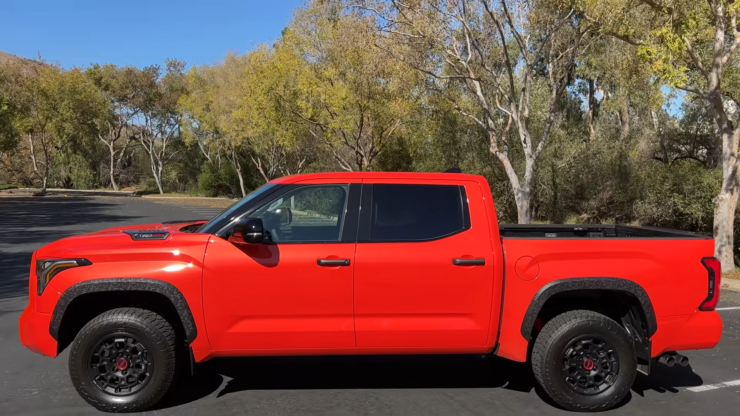
Comparative Features for Toyota Tundra
- Power: Toyota Tundra is built to offer an incredible amount of energy. Thanks to its impressive engine designs.
- Performance: The Toyota Tundra is famous for its additional power, guaranteeing a reliable & fun-filled off-road experience and adequate towing capabilities. Over the years, there have been several significant modifications and upgrades to enhance operation, use, and performance.
- Drive: The Toyota Tundra has the rear-wheel-drive (RWD), the standard design. The 4-wheel drive (4WD) is optional.
- Safety: The Toyota Tundra, just like every other Toyota model, is highly rated for its protection. This vehicle is designed with several features that enhance safety on the road.
- Value: The price of the Tundra varies according to the model year. As you know, it has experienced tremendous improvements and upgrades over the years with the introduction of new/improved features. Hence, the more recent models are more valuable designs.
On average, the new model of the Toyota Tacoma costs about $41,470.
- Reliability: The Toyota Tundra is built using premium/durable parts to ensure long-lasting use and performance, and this says a lot about its exceptional resale value. Even at over 200,000 miles covered, the Toyota Tundra still has a lot of power to cover a few thousand miles more.
- Space: The Toyota Tundra is an excellent design for the family. Thanks to its comfortable interior features/design. It can accommodate up to 6 individuals and has sufficient storage space.
Toyota Tundra generations
The Second Generation of Toyota Tundra 2007-present
In 2007, the 2nd generation of the Toyota Tundra was launched. This generation is still active today.
This generation resolves some issues with the previous generation, reinforcing the Toyota Tundra identity as a work truck. The notable upgrades include bigger bed sizes, improved headrests & door handles, the infotainment system & Bluetooth, and a massive upgrade in the overall performance.
Standard Configuration
- 3L V6 & 5.7L V8 engines
- 10,000 pounds towing capacity
- 2,000 pounds payload
- Three cab sizes
- The infotainment system and Bluetooth
First Generation Toyota Tundra 1999-2006
The 1st generation of the Toyota Tundra lasted for about seven years. During this time, it had to deal with a lot of identity-related issues.
The design shared several similarities with the Toyota Tacoma and the T100 models. It struggled to make as many impressions as expected/envisaged, especially regarding some of the critical factors (towing capabilities and bed size) buyers consider when looking for a truck to buy.
However, it was able to fulfill the needs of individuals, especially in the United States, who invest in trucks mainly for personal operation/use.
Standard Configuration
- 4L V6 & 4.0L V6 engines
- 4-speed automatic, 5-speed manual, 5-speed automatic, and 6-speed manual transmissions
- Real-wheel drive and 4-wheel drive
- 6,700 pounds towing capabilities
Toyota SUV Models Information
History of Toyota RAV4
The Toyota RAV4 was introduced into the market in 1994. This was when the body-on-frame SUVs (unibody designs) were getting the hype in the automobile industry.
Over the years, the RAV4 has gone through various redesigns, modifications, and upgrades. It is now in its 5th generation and has grown hugely to become one of the top car choices worldwide.
Between 2018 & 2019, the Toyota RAV4 was crowned as the best-selling SUV across the world. Still, in 2019, it came 4th in the worldwide best-selling passenger car category.
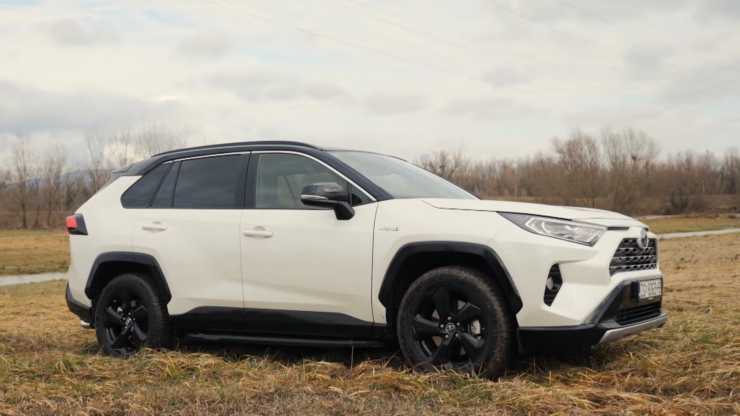
Comparative Features for Toyota RAV4
- Power: There have been tremendous transformations and improvements across the Toyota RAV4 models. Over the years, we have witnessed the introduction of different types of engines to meet the needs of various customers around the world. There are gasoline-compatible engines and diesel-compatible designs, with as high as 3.5L capacity.
- Performance: Starting from the 1st generation to where it is now. The Toyota RAV4 has undergone various improvements to meet the evolving market by providing new designs that meet car owners’ changing needs and tastes worldwide. The Toyota RAV4 is famous for its technical excellence and advancement, and thanks to its improved handling and performance while driving on the road and during off-road adventures.
- Drive: The Toyota RAV4 is available in all-wheel drive, front-wheel drive, and 2-wheel drive.
- Safety: When it comes to safety, the Toyota RAV4 is rated as one of the top choices of vehicles that instills confidence on the road. All the various parts and features are designed for improved safety on the road from time to time.
- Value: Ideally, the more recent the model, the more expensive they are due to the significant upgrades they offer. On average, the new model of the RAV4 costs about $27,225.
- Reliability: This Toyota vehicle has gained an incredible level of popularity over the years for its reliable performance. Incredibly for how agile and versatile it is while handling everyday challenges/demands on the road and being exceptionally suitable for the modern era and lifestyle. Hence its popularity among families and young motorists. On average, this vehicle can last between 14 and 16 years.
- Space: The RAV4 is designed to meet modern standards perfectly. Over the years, there have been several upgrades in the vehicle’s size, ensuring more room for individuals who desire a car that supports active lifestyles and comfortably accommodates families. The Toyota RAV4 can accommodate up to 5 people comfortably.
Toyota RAV4 Generations
Fifth Generation Toyota RAV4 2019-present
The 5th generation of the Toyota RAV4 launched about two years ago. The manufacturer redefined the design by giving it a new look/appearance. This generation is more compact than the previous, enhancing its ability to move quickly into parking spaces and through traffic. Other notable upgrades include the lowered roofline, a more innovative and sophisticated interior design, and higher ground clearance for enhanced cargo and off-road capabilities.
Standard Configurations:
- 5L inline-four engine
- 203hp and 284 lb-ft torque
- Apple CarPlay
- Dashboard shelves
- Eight-speed automatic transmission with overdrive
- Front-wheel drive
- Remote keyless entry and key fob for all the doors
Fourth Generation Toyota RAV4 2013-2018
Before 2016, the major upgrade 4th generation offered can be traced to the wheelbase, which became standardized across the globe. During this time, the vehicle’s length was increased by an extra 23.5 centimeters.
In 2016, the biggest news of this era was announced. The 1st full hybrid electric RAV4 version was introduced, significantly improving power, fuel consumption, and acceleration.
Standard Configurations:
- 0 and 2.5-liter petrol engine
- 0 and 2.2-liter diesel engine
- Dynamic Torque Control system
- All-wheel drive
- Cornering control & sport driving mode
Third Generation Toyota RAV4 2006-2012
The 3rd generation brought an end to the 3-door body style. As a result, the 5-door body style became a bit longer. The modification was done to meet the change in customer preferences and needs.
During this time, the RAV4 experienced an overall increase of about 19 centimeters in length. Other notable upgrades were improvement in handling capabilities and the extension in engine designs.
Standard Configurations:
- 0L petrol engines
- 2L diesel engine
- 5-door body style
- 200mm ground clearance
- 4-wheel Drive
- Electrically assisted steering
Second Generation Toyota RAV4 2000-2006
The 2nd generation was the start of another era. The experience gained from the 1st generation was implemented. The interior was improved, and there was an increase in length in the 3-door (almost 6 centimeters longer) and 5-door body styles (4 centimeters longer).
In 2001, a diesel-powered engine was introduced.
Standard Configurations
- Petrol engines-1.8L (124hp)
- Diesel engine- 0-litre D-4D (116hp)
- All-wheel drive & 4-wheel drive
First Generation Toyota RAV4 1994-2000
The 1st generation of the Toyota RAV4 launched about 27 years ago. Being the first modern SUV vehicle, it later became an inspiration in the automotive industry, paving the way for other cars of its kind.
From 1997 till 2000, the manufacturer released the EV battery-electric model to the market, although in limited units.
Standard Configurations:
- 69m long & 4.1m long
- 3-door model & 5-door model
- 2L petrol engine (129hp)
- All-wheel drive
History of Toyota 4runner
Introduced about 37 years ago (1984), the Toyota 4Runner has undergone several years of modifications and upgrades. It has five generations of designs in the process.
Up till today, the 4runner has retained its position as one of the few reliable and top-rated mid-size SUV designs available on the market. The significant attractions toward this Toyota model include its impressive off-road and towing capabilities, making it a suitable choice among adventure enthusiasts.
Also, it is an excellent choice for individuals with small families
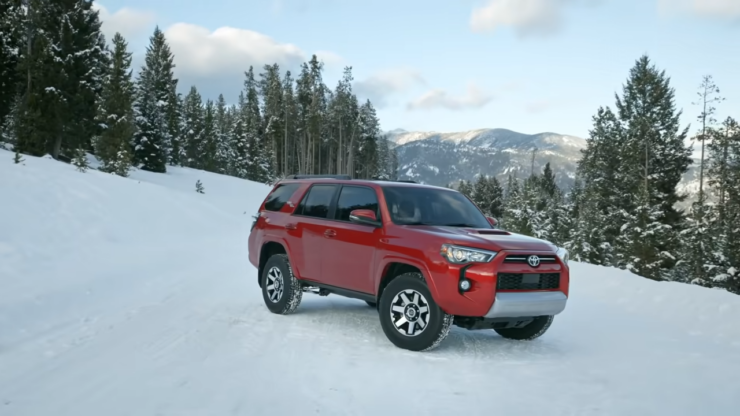
Comparative Features for Toyota 4runner
- Power: Over the years, we have seen several designs of engines. The new machines were introduced to meet the current realities or demands, ensuring the vehicle is adequately powered for reliable performance.
- Performance: The Toyota 4runner has a long history of reliable performance both on the road and off-road. Irrespective of your driving preference, this vehicle ensures you get the version that you desire.
- Drive: Depending on the model year, the Toyota 4runner comes in 2-wheel drive, 4-wheel drive, or rear-wheel drive.
- Safety: Like every Toyota vehicle, the 4runner has gone through several interior and exterior upgrades to improve critical factors such as safety. With the introduction/addition of efficient technologies and standard features in the latest models, security is more enhanced than ever.
- Value: The price of a new 4runner varies according to the design or model year. The new model costs about $37,305, on average.
- Reliability: The Toyota 4runner has gathered a lot of praise for the smooth-riding experience it offers while driving on the road and for its impressive off-road capabilities.
- Space: This vehicle is designed with a lot of room to accommodate small families. Usually, the Toyota 4runner can accommodate up to 5 people comfortably, and this number can be extended to 7 in the newer models.
Toyota 4runner Generations
Fifth Generation Toyota 4runner 2010-present
The 5th generation is designed to offer superior and mind-blowing features compared to previous generations. For instance, the trim levels were extended, and sophisticated features and tech were added to support further/enhance off-road adventures. Also, the V8 engine was retired, and the V6 engine was improved to give more power.
Standard Configuration
- 0L V6 engine
- 270hp & 278 lb-ft torque
- LED taillights
- Keyless access
- Rear-view camera
Fourth Generation Toyota 4runner 2002-2009
The 4th generation of the Toyota 4runner lasted for seven years. During this time, the wheelbase was increased, likewise the length. This upgrade was made to provide more stability and support while driving on and off the road.
Also, the 4-cylinder engine was retired, paving the way for the V6 & V8 engines.
Standard Configuration
- V6 VVT-i engine (245hp & 282 lb-ft torque)
- 7L V8 engine (235hp & 320 lb-ft torque)
- 4-speed automatic & 5-speed automatic
- 4-wheel drive
- Three trim levels
- 7,200 towing capabilities
Third Generation Toyota 4runner 1995-2002
Just like the 4th generation, the 3rd was also on the market for seven years. The improved interior and power made it a better and more advanced option than the previous generations. The availability of 2 engine designs ensured buyers could choose according to their needs and requirements.
Standard Configuration
- 7L 4-cylinder engine (150hp & 177 lb-ft torque)
- Rear-wheel drive & 4-wheel drive
Second Generation Toyota 4runner 1989-1995
Some significant/notable improvements were experienced in the 2nd generation of 4runner. A year after its launch, buyers had the privilege to pick either the 2-door model or the 4-door. Also, the 2-wheel drive option was made available for buyers who didn’t get along with the 4-wheel drive.
Standard Configuration
- 4L 4-cylinder
- 2 & 4-door options
- Rear-wheel drive, 2-wheel, and 4-wheel drive
- Flexible cargo space
- 2-wheel drive
First Generation Toyota 4runner 1984-1989
The 1st generation was designed further to enhance motorists’ interest in off-road trips and adventures. The earliest design came with a 4-cylinder engine and a more spacious cargo room to accommodate & store items or tools needed for outdoor activities. Down the line, the engine, suspension, and interior were upgraded to improve the ride experience.
Standard Configuration
- 4L inline 4-cylinder engine (100hp)
- 2-door model
- 4-wheel drive
- Detachable fiberglass shell
History of Toyota Highlander
The first version of the Toyota Highlander has launched about 20 years ago. From 2001 until now, there have been four different generations.
This vehicle wasn’t designed as a truck, like most of the full-size SUVs available at that time. Instead, it was intended as a car. The Toyota Highlander became famous for its impressive handling, outstanding comfort, and adequate interior space. However, the off-road capability was light.
Over the past few years, it has undergone a comprehensive series of modifications and adjustments, especially in size and new/improved features.
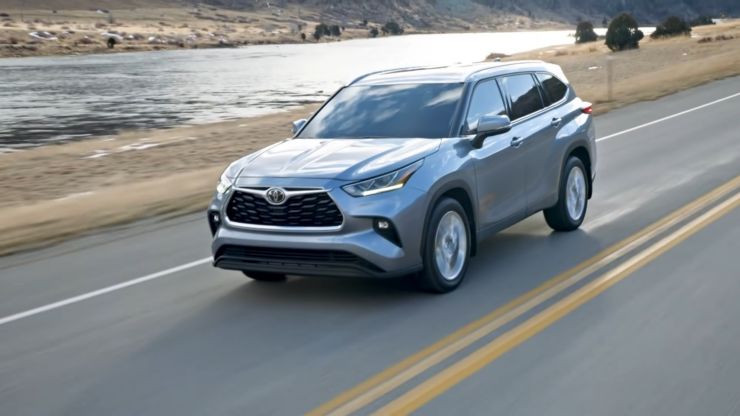
Comparative Features for Toyota Highlander
- Power: From the 1st generation to the 5th, the Toyota Highlander has undergone various modifications and redesigns. During this time, there have been several types of engines to sustain reliable and long-lasting performances.
- Performance: The Toyota Highlander offers improved handling capability, better fuel efficiency, reduced noise levels, and better ride comfort.
- Drive: Over the five generations, 2-wheel drive, 4-wheel drive, front-wheel drive, and all-wheel drive have been offered.
- Safety: This vehicle is one of the safest designs or models you can buy. It is built with numerous safety features to support drivers on the road. Over the years, new safety features have been added to meet the current realities and standards.
- Value: Each generation has something new to offer. For instance, the 5th generation of the Toyota Highlander has a higher value than all the previous generations. On average, the latest model costs about $49,190.
- Reliability: Toyota Highlander offers an impressive level of reliability. This vehicle is designed to perform excellently up to about 20 years, roughly 300,000 miles in total.
- Space: The early designs of the Toyota Highlander could accommodate five individuals comfortably. Over the years, there has been a significant improvement in size and interior space to allow eight passengers comfortably at a go. The cargo space has also experienced considerable improvement.
Toyota Highlander Generations
Fourth Generation Toyota Highlander 2024-present
The 4th generation Toyota Highlander is designed to extend across other segments of the market by repositioning itself. The aim is to make it attractive to active young individuals, not just for people with families. Thanks to the premium feel it offers
The major improvements were the additional 6 centimeters in length and wheelbase & cargo space expansion.
Standard Configuration
- 5L V6 engine (295hp & 263 lb-ft torque)
- Front-wheel drive
- Apple CarPlay & Android Auto
- One cubic feet cargo space
- 3-inch touchscreen
Third Generation Toyota Highlander 2014-2019
Thanks to its more comprehensive and extended design, the 3rd generation created more room than the 2nd generation. Also, the roofline was lowered to support improved aerodynamics, and the seat and cargo capacities were improved to accommodate more people and luggage, respectively.
Standard Configuration
- 5L V6 engine (295hp & 263 lb-ft torque)
- 6-speed automatic transmission
- Accommodates eight passengers
Second Generation Toyota Highlander 2008-2013
The 2nd generation came with more power and interior space. The passengers on the 2nd and 3rd rows had more legroom, the headroom was raised, and the hip point was increased to provide more comfort while seating.
Standard Configuration
- 5 liter V6 engine (270hp & 284 lb-ft torque)
- 6-speed automatic
- All-wheel drive
- 5-inch rear camera display
First Generation Toyota Highlander 2001-2007
The 1st generation was introduced during the era of truck-based SUVs. Its unibody appearance and the improvement in ride quality made it an instant hit in the automotive world.
Standard Configuration
- 2-wheel drive & 4-wheel drive
- 4L inline-four cylinder engine (155hp & 163 lb-ft torque)
- 3L V6 (230hp)
- 4-speed automatic & 5-speed automatic transmissions
Toyota Models of Cars Information
History of Toyota Prius
The Toyota Prius was launched and made available for purchase in 1997, making it the first mass-produced petrol-electric hybrid car. This vehicle was mainly available and sold in Japan between 1997 and 2000. Later that year (in 2000), it was made available on a global scale.
The Toyota Prius has gone through a series of upgrades since its launch. It is now in the 4th generation.
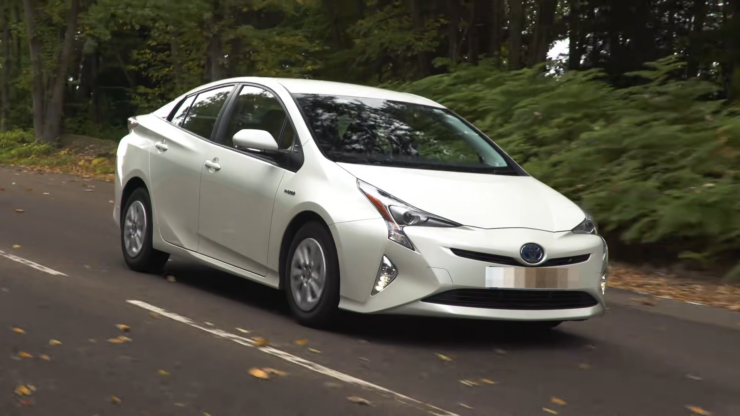
Comparative Features for Toyota Prius
- Power: This vehicle is equipped with a petrol-powered engine with the integration of an electric motor. The electric motor activates or turns on the machine and takes care of the basic operations, switching to the petrol-powered engine for significant functions, such as moving the vehicle.
- Performance: The Toyota Prius is famous for its impressive fuel efficiency. However, it is a bit slow. The slow acceleration is due to the manufacturer’s preference, where fuel efficiency is more important than acceleration.
- Drive: The Toyota Prius comes in a front-wheel industry (standard) or all-wheel drive.
- Safety: This vehicle has proven itself over time as one of the safest options available out there over the years. Thanks to the advanced safety features and tools for every model for improved safety while on the road.
- Value: The new models have a higher price tag due to upgrades across all areas to improve overall performance. On average, the new model of the Toyota Prius costs about $25,550.
- Reliability: Since its launch about 14 years ago, the Toyota Prius has consistently proven itself as a very reliable design. The battery life is impressive, it possesses a smooth engine, and the running cost is low. When you look on the road today, several early models are still performing strongly.
- Space: The Toyota Prius boosts or enough/adequate space that supports passengers’ comfort. Thanks to its good seat design and sufficient legroom for individuals sitting in the back seat. Also, there is enough room behind the seat to store your items.
Toyota Prius Generations
Fourth Generation Toyota Prius 2015-present
The 4th generation of the Toyota Prius launched about six years ago and still exists to date. Although it still retains the wedge-shaped design, the appearance looks more aggressive, and the center of gravity is not as high as the previous versions.
Standard Configuration
- 8-liter VVT-i gasoline engine (121hp )
- 9 miles per gallon
- 502 liters trunk volume
- Nickel-metal hydride battery material
- 142 Nm @ 3,600 rpm maximum torque
Third Generation Toyota Prius 2009-2015
The 3rd generation Toyota Prius came with larger body size than the previous generation. In addition, the engine’s size was raised to 1.8L, and components such as the headlights, side view, and hood were greatly improved while retaining the wedge-shaped design.
Standard Configuration
- 4 miles per gallon
- 89g/km CO2 emissions
- 8-litre Atkinson cycle petrol engine
- Smaller & lighter Hybrid Synergy Drive system
Second Generation Toyota Prius 2004-2009
The 2nd generation of the Toyota Prius was launched in 2004. This time, with an entirely new design. The aerodynamics were improved, and it had a refined appearance & unique styling.
This generation came with the Toyota Hybrid System II, which improved fuel efficiency significantly.
Standard Configuration
- 5-litre NZ-series Atkinson cycle engine
- 1,200rpm torque
- 7 miles per gallon
- Improved battery pack
- 104g/km CO2 emissions
First Generation Toyota Prius 1997- 2003
The 1st generation of Toyota Prius became the 1st hybrid passenger vehicle made available or cleared for mass-production. It had a sturdier look/appearance.
By the end of the 1st generation, it was rated as the most successful vehicle in its category.
Standard Configuration
- 4-cylinder 1.5-litre NZ-series Atkinson cycle engine
- Nickel-metal hydride battery
- 6 miles per gallon
- 114g/km CO2 emissions
- 62mph in 13.4 seconds & 99mph maximum speed
History of Toyota Corolla
The Toyota Corolla is one of the oldest cars globally, and it has been around for about 55 years. After its launch in 1966, it only took the Toyota Corolla 8 years to become the world’s favorite. In 1974, it crowned the best-selling car worldwide and has retained the hype since then.
Until today, the Toyota Corolla remains one of the best-selling Toyota vehicles and best-selling cars globally. This vehicle has gone through a series of upgrades to enhance its reliability, and it is in the 12th generation.
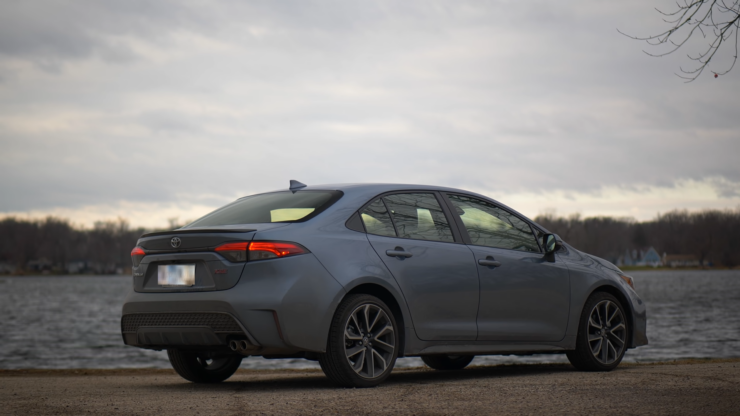
Comparative Features for Toyota Corolla
- Power: The Toyota Corolla is built to offer the adequate capacity to meet individuals’ needs and expectations. Over the years, there have been significant upgrades in the engine design to ensure this vehicle keeps pumping out an incredible amount of horsepower for efficient and consistent performance. The standard gasoline engines sizes are commonly between 1.2L and 1.8L.
- Performance: The major factors that have significantly contributed to the success the Toyota Corolla has recorded over the years include performance, fuel efficiency, and improved driving experience. It is undeniably one of the best you will find around in the business.
- Drive: Depending on the generation, the Toyota Corolla is available in rear-wheel drive, front-wheel drive, and 4-wheel drive.
- Safety: Starting from the 1st generation, the Toyota Corolla has always been designed to offer more than performance and style. The models under each age were designed to meet safety standards.
- Value: The value of the Toyota Corolla has improved/significantly increased over the years. The newer designs come with several sophisticated and technologically advanced features that support modern needs, eventually reflecting the price. On average, the latest Toyota Corolla costs about $21,700.
- Reliability: From the first generation, the Toyota Corolla was built to be powerful yet affordable. This hasn’t changed till now. Over the years, there have been many technological advancements to support modern needs, lifestyles, or standards.
- Space: The Toyota Corolla has always been a compact design, and however, it is relatively more minor compared to its competitors. The Toyota Corolla can comfortably accommodate five passengers, and it also has impressive cargo storage capabilities.
Toyota Corolla Generations
Twelfth Generation Toyota Corolla 2019-present
The 12th generation of Toyota Corolla picks it up from where the 11th generation stopped. This time, designed to look more aggressive while retaining its modern appearance. Also, an expansion was made to the power units.
Just as the previous generations, it is also available in hatchback, sedan, or hybrid sedan,
Standard Configuration
- 8L2ZR hybrid (169hp)
- 2L M20A hybrid powertrains (180hp)
- 53 miles per gallon
- 7-speed CVT, 6-speed manual, eCVT, and 7/8-speed Super CVT-I transmissions
Eleventh Generation Toyota Corolla 2012-2018
The 11th generation was designed to deliver on the current waves at that time. During this period, fuel efficiency was becoming more essential than ever before, and this generation took the Toyota Corrola closer to meeting modern standards.
Standard Configuration
- 3-litre 1NR-FE I4 to 1.8-litre 2ZR-FE I4 engines
- E-CVT transmission for vehicles with the hybrid system
Tenth Generation Toyota Corolla 2007-2012
The 10th generation Toyota Corolla launches/introduces the 1st generation of the Toyota Auris to the market.
Standard Configuration
- Petrol and diesel engines
- Five different transmissions
- More rounded appearance
Ninth Generation Toyota Corolla 2000-2006
The 9th generation witnessed a new design of the Toyota Corolla. It was designed to look captivating and appealing to the younger car buyers. The handling, interior, and fuel efficiency were significantly improved.
Standard Configuration
- Petrol and diesel engines
- 4-speed automatic, 5 & 6-speed manual, and 5-speed multimode manual transmissions
Eight Generation Toyota Corolla 1995-2000
The 8th generation was targeted at improving sales across various markets around the world. During this time, Toyota built different Corolla models specifically for other needs.
Standard Configuration
- 1ZZ-FE engine
- 2L diesel engine & electronically controlled injection pump (71hp & 97 lb-ft torque)
Seventh Generation Toyota Corolla 1992-1995
The 7th generation offers major upgrades over the previous models. It was designed to be safer, faster, and larger.
Standard Configuration
- 3L 4E-FE engine (87bhp & 82 lb-ft torque)
- 6L engine (113hp & 107 lb-ft torque)
- DOHC layout.
- 4-valves per cylinder
- Fuel injection
Sixth Generation Toyota Corolla 1987-1992
The 6th generation Toyota Corolla came with several engine options than what was experienced in the past. During this time, Rear-wheel drive was halted, paving the way for just the front-wheel drive.
Standard Configuration
- 3-liter 2E to 1.8-liter 1C engine options
- Front-wheel drive
Fifth Generation Toyota Corolla 1983-1987
The front-wheel-drive was launched in the 5th generation. Also, the exterior was redesigned, and new transmissions were introduced. This period was also the first time the Toyota Corolla was designed using computer technology.
Standard Configuration
- Front-wheel drive
- 4-speed automatic, 4–speed manual, and 5-speed manual transmissions
- 3L2A-LU, 1.5-litre 3A-LU & 1.6-litre 4A-ELU ( electronic fuel injection) engines
Fourth Generation Toyota Corolla 1979-1983
The 4th generation offers a significant improvement in fuel efficiency. A diesel engine was introduced three years later (1982), improving cold start and fuel consumption. Other improvements/upgrades were an advanced aerodynamic body, complete interior transformation, and a new suspension.
Standard Configuration
- 5-litre 3A-U engine (79hp & 85 lb-ft torque)
- Vibration-proof structure
- Urethane bumpers
Third Generation Toyota Corolla 1974-1979
When the 3rd generation was introduced to the market, offering a wider size, a quieter cabin, and the interior offered more comfort. During this time, significant upgrades were implemented to enhance the safety of drivers.
Standard Configuration
- Catalyst-based exhaust gas purification system
- 6L 2T-U & 1.4L T-U engines
- Impact-absorbing body structure
- 3-point retractor seatbelts
Second Generation Toyota Corolla 1970-1974
The 2nd generation of Toyota Corolla offers numerous features for enhanced comfort, bold and appealing exterior design, and it was built to improve the driving experience of every owner. New engines and the 2-door coupe & Toyota Corolla Levin were introduced.
Standard Configuration
- 2-litre K-series & 1.4-litre T-series engines
- 4-speed & 5-speed transmissions
- MacPherson suspension setup
- Disc brakes
- Torsion bar stabiliser
- Proportioning valves
First Generation Toyota Corolla 1966-1970
The 1st generation Toyota Corolla was built in Japan, and it was designed for families and everyday use. The Toyota 1st generation Corolla boasted of some unique features that were only popular among the expensive cars during this period.
Standard Configuration
- 2-door saloon, 4-door sedan, and 2-door station wagon models
- 1L engine (59hp & 61 lb-ft torque)
- 2L engine (67hp & 69 lb-ft torque)
- Reclinable bucket seats
- Heater, armrests, center console, and a radio.
History of Toyota Camry
The Toyota Camry was launched in 1983. Over the years, it has grown to become one of the most famous families’ vehicles worldwide. Thanks to its impressive fuel usage, excellent build quality, comfort, and sophisticated interior design.
Since the first generation was launched or introduced to the market, there have been eight generations of the Toyota Camry in total.
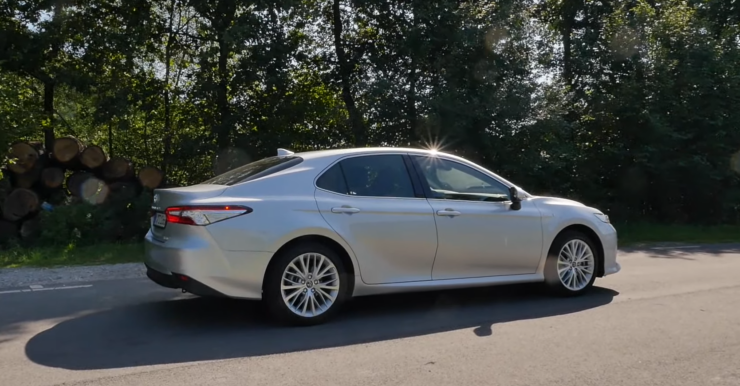
Comparative Features for Toyota Camry
- Power: Over the eight generations, there have been significant upgrades in engine designs. This ensures sufficient/adequate power is made available for the Toyota Camry to perform significantly at all times. The engine designs range from 1.8L to 3.5L.
- Performance: The Toyota Camry has retained its position as the best-selling sedan in the United States of America over the past years. Thanks to the incredible performance it offers at every point in time.
- Drive: Depending on the model, the Toyota Camry is available in front-wheel drive and all-wheel drive.
- Safety: The Toyota Camry is one of the safest vehicles you will find on the road. Over the years, there have been several upgrades to enhance safety on the road.
- Value: The Toyota Camry is expensive. The newer models are equipped with many sophisticated features that enhance performance and drive experience, making them a perfect fit for the modern era. When compared to its competitors, it stands out as the most expensive in its category. The latest Toyota Camry model costs around $35,000 on average.
- Reliability: The Toyota Camry is very popular for its outstanding reliability. It is built with durable parts and components that support an extended lifespan, and this says a lot about its excellent resale value.
- Space: The Toyota Camry can comfortably accommodate five passengers. It also has impressive cargo storage capabilities.
Toyota Camry Generations
Eight Generation Toyota Camry 2018-present
The 8th generation of the Toyota Camry was designed to offer significant improvements in driving dynamics. Other notable additions include introducing a new 4-cylinder V6 engine, and the hybrid models were equipped with a new powertrain.
Standard Configuration
- 5L 4-cylinder engine
- 203hp
- 6-speed automatic transmission
- 34 miles per gallon
- Front-wheel-drive
Seventh Generation Toyota Camry 2012-2017
The 7th generation was where the manufacturer decided to end manual transmission in the Toyota Camry. This generation was equipped with more outstanding features for an improved infotainment system, easy operation & control, and performance improvement.
Standard Configuration
- Manual transmission
- CE, LE, SE and XLE trim levels
- 5L 4-cylinder engine
- 178hp
Sixth Generation Toyota Camry 2007-2011
During the introduction of the 6th generation, several options were added to the 4-door sedan and the 5-passenger model.
The Hybrid model of the Toyota Camry operated on a gas engine and electric motor was also introduced during this time.
Standard Configuration
- 5-speed manual transmission
- 4 trim levels (CE, LE, SE and XLE)
- 4L 4-cylinder engine
- 158hp
Fifth Generation Toyota Camry 2002-2006
The 5th generation was designed slightly larger than the previous generation, and however, it retained the same levels of fuel efficiency and performance.
Standard Configuration
- 0L V6 engine
- 152-186hp
- 4-speed automatic or 5-speed manual transmissions
Fourth Generation Toyota Camry 1997-2001
During the launch of the 4th generation, the station wagon variant of the Toyota Camry was discontinued in the USA. The redesigned sedan obtained a new appearance during this time, and the engine’s version became two.
Standard Configuration
- 2L 4-cylinder engine (133hp)
- 3L V6 engine (194hp)
- 4-speed automatic or 5-speed manual transmissions
Third Generation Toyota Camry 1992-1996
The 3rd generation Toyota Camry offered a smoother and rounded appearance. The air-conditioning system was improved to achieve better comfort, and it was also well-insulated to eradicate noise while driving on the road.
Standard Configuration
- 2L 4-cylinder engine
- 4-speed automatic or 5-speed manual transmissions
- Multi-point fuel injection
Second Generation Toyota Camry 1987-1991
The 2nd generation Toyota Camry retained the body style of the 1st generation. However, it was improved by adding some advanced options/features.
Standard Configuration
- 4-cylinder engine
- 130hp
- All-wheel-drive system
First Generation Toyota Camry 1983-1986
The 1st generation was the launch of the Toyota Camry, and it was designed as a small 4-door sedan for small families and commuters.
Standard Configuration
- 0L engine & carburetor
- Front-wheel drive
- 5-speed manual transmission
- 5 miles per gallon
- 130hp
- 0-62MPH in 12 sec
- 2 miles per hour top speed
Conclusion
We hope the Toyota info provided in this article has given you a clearer understanding of how your favorite Toyota vehicles came into inception. Especially the numerous evolutions that occurred over the years till this era.
Looking at how intriguing the journey has been and the remarkable achievements recorded from one generation to another. We can only wait patiently to see what else Toyota has under its sleeve.
Related Posts:
- Toyota Dealer Near Me 2024 - Discover the Best Deals
- 14 Must-Know Facts About Speed Sensor ABS: Enhancing…
- 10 Best Performance Chip for Toyota Tacoma 2024 -…
- How to Reset Idle After Replacing Battery from…
- 13 Best Brake Pads For Toyota Corolla 2024 - Ensure…
- 10 Best Bull Bar for Tacoma 2024 - Increase Your…






